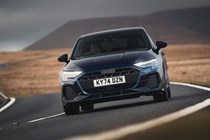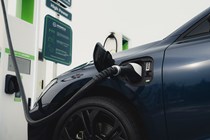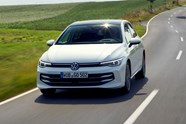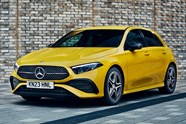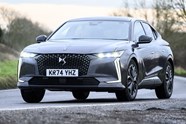Audi A3 TFSI e PHEV review: Polished but pricey premium hybrid
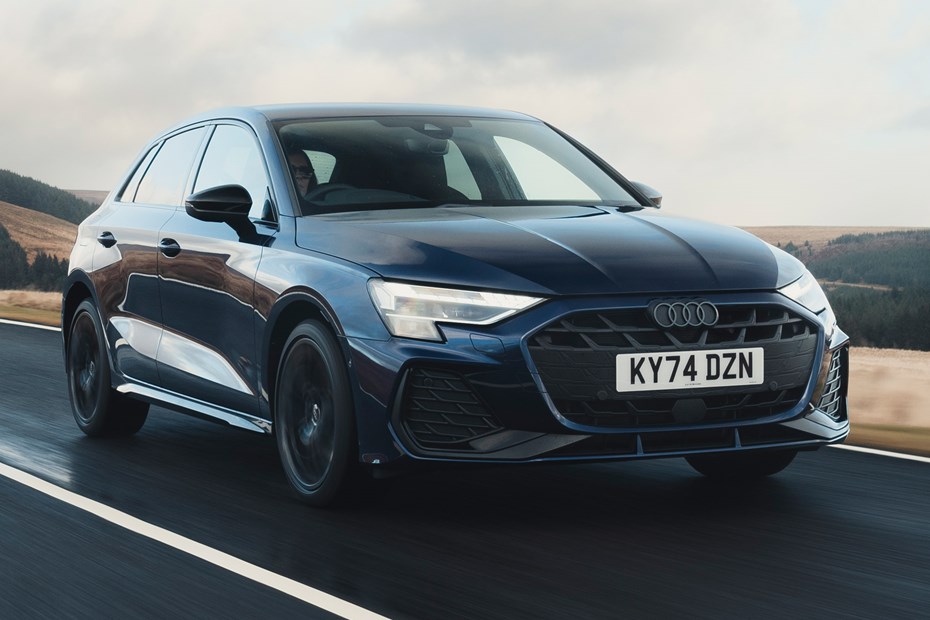
At a glance
| Price new | £39,290 - £47,015 |
|---|---|
| Used prices | £23,580 - £33,824 |
| Road tax cost | £195 - £620 |
Get an insurance quote with

|
|
| Fuel economy | 53.3 - 57.6 mpg |
| Miles per pound | 7.8 - 8.4 |
| Number of doors | 5 |
| View full specs for a specific version | |
Available fuel types
Hybrid
Pros & cons
- Excellent electric driving range for a PHEV
- Very low company car tax
- Comfortable and good to drive
- Much more expensive to buy than an equivalent VW Golf
- Boot is smaller than a standard A3
- Pricey optional extras
Audi A3 Phev rivals
Overview
Should you buy an Audi A3 TFSI e plug-in hybrid?
There is no doubt that the Audi A3 TFSI e is a highly accomplished plug-in hybrid, which has undergone significant improvements as part of this mid-life update. Courtesy of a new, larger battery, the 88-mile claimed electric range is one of the longest of any PHEV, and means most journeys could be completed on electricity if you’re able to charge regularly.
It’s also great to drive, proving both comfortable and very refined, even when equipped with larger alloy wheels, and feels more involving than the Volkswagen Golf e-Hybrid. The A3’s one main issue is its list price, especially when you compare it to the Golf, which is several thousand pounds cheaper. It’s worth trying them both first, though, as well as comparing the leasing deals, to see how close you can get the A3’s price to the Golf’s.
What’s new?
The Audi A3 is one of the most popular family hatchbacks on the market, and a key draw to its success in recent years has been the option of a plug-in hybrid. Following on from the standard Audi A3 being facelifted in 2024, a year later comes a significantly revised PHEV model, the TFSI e.
While the updated Audi A3 might not look much different from the outside, there are some big changes under the surface, not least a new hybrid powertrain boasting a new 1.5-litre petrol engine and a larger battery, and as a result, a much-improved electric range. Audi claims up to an impressive 88 miles. That’s more than double what the previous car achieved.
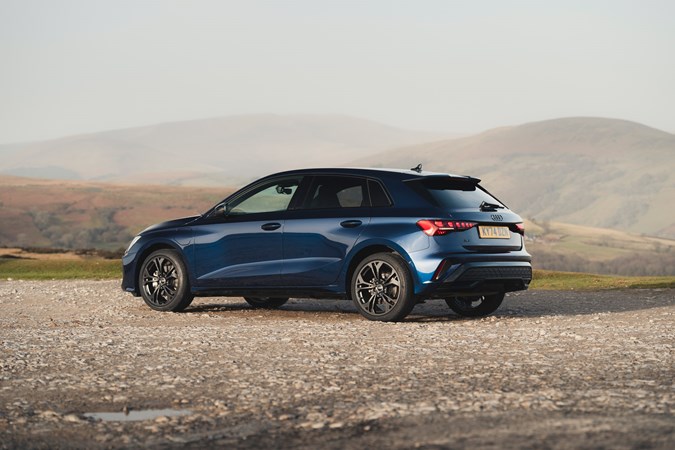
The A3 is the latest VW Group car to receive this powertrain, which is already available in the impressive Volkswagen Golf e-Hybrid and Cupra Leon, as well as far larger models such as the Skoda Kodiaq. We’d also recommend the Mercedes A250e, as well as the DS 4 plug-in hybrid, though the latter’s electric range lags a long way behind the A3.
Having previously lived with a regular Audi A3 as a long-termer for six months, this is a car we’re very familiar with. But is this latest plug-in hybrid the one you should buy? Read more about how we test cars at Parkers.
What’s it like inside?
With the exception of some slightly different digital dials and a new touchscreen menu to reflect the different powertrain, this plug-in hybrid A3’s interior is the same as a regular petrol and diesel model. By and large that’s a good thing as the A3 has one of the best cabins of any family hatchback.
Though perhaps not quite as solidly built as previous-generation A3s, it still has a premium finish. There are plenty of soft-touch materials throughout, and the ergonomics are excellent. Next to the latest Golf e-Hybrid, which has a large touchscreen used to control most key functions, the A3’s interior can seem a bit traditional, but we think it’s a good thing, as it makes it easier to use, with the climate control still being operated using physical buttons.
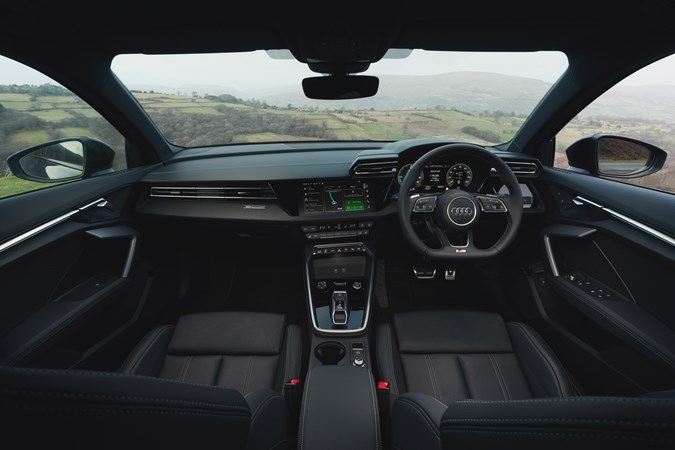
The touchscreen and digital instrument cluster are both clear and easy to use, though it’s annoying that you have to agree to certain terms and conditions on the touchscreen every single time you get in. We’re also not a fan of all the gloss black trim around the centre console, which you’ll now find on most Audis. Though it looks fine on a new car, it’s very susceptible to being scratched.
As with the pre-facelift model, the plug-in hybrid is only available in Sportback (five-door hatch) guise, though the rear seat space is unchanged compared to the regular car, despite the fitment of a larger battery than before. It’s not a particularly roomy car for those in the back, but two adults should fit, though three would be very uncomfortable. You’ll get slightly more space in the back with a VW Golf e-Hybrid.
Audi A3 TFSI e boot space
While rear seat space might not be compromised compared to the regular A3, the downside is that the boot’s available space is. Because of the hybrid batteries, you essentially lose the A3’s underfloor storage area, so whereas the car normally has a height-adjustable floor with space beneath, the PHEV’s boot sits flush with the sill with no space beneath.
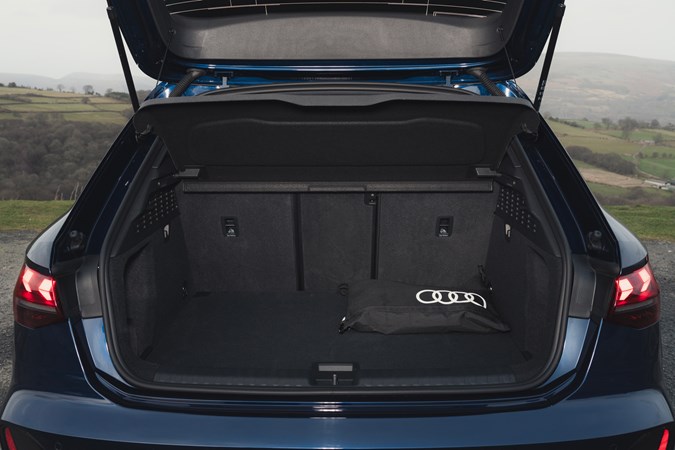
It shaves 100 litres off the standard A3’s boot space, leaving 280 litres of space to play with, which is smaller than most cars from the class below, including the 335 litres of space you get with an Audi A1. You do get ever so slightly more space in the A3 than the equivalent Golf e-Hybrid or Cupra Leon e-Hybrid, however.
Audi A3 TFSI e engines
This is the key change for the latest Audi A3 PHEV. Previously it used a 1.4-litre turbocharged petrol engine paired to an electric motor, with 201bhp and 242bhp versions available. However, for this 2025 update, it now uses a new 1.5-litre petrol engine paired to an electric motor housed within the six-speed automatic gearbox. and is only now available in a 201bhp flavour (badged as the 40 TFSI e). A more powerful 268bhp 45 TFSI e is available in other countries, but Audi has decided not to offer this in the UK for the time being. Drive is delivered to the front wheels.
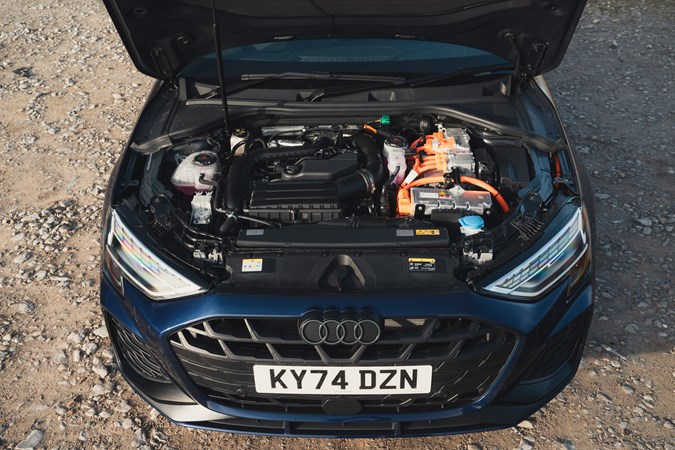
In terms of performance, Audi claims it can accelerate from 0-62mph in 7.4 seconds, making it the fastest A3 outside of the sportier S3 and RS3 hot hatches. It’s also able to hit a top speed of 139mph, and is able to do 87mph in electric mode.
What’s it like to drive?
This new plug-in hybrid powertrain is a significant improvement over the old setup, not just in terms of its efficiency (which we’ll come onto in the next section) but also in the way it drives.
This 1.5-litre petrol engine is generally smoother and is more refined, though can sound a little gruff if you’re driving it without any electric range. But the transition between petrol and electricity is impressively smooth, and even if you drive purely in electric mode, the motor on its own produces 115hp and still feels more than quick enough to keep up with traffic.
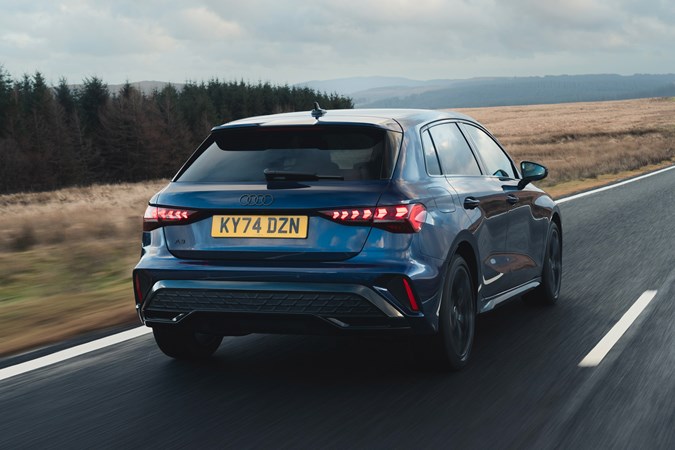
Our test car was in S line specification, coming on a lowered sports suspension that improved the way the A3 drives yet without sacrificing ride comfort. The steering is direct and grip plentiful, and despite the PHEV being around 250kg heavier than a standard petrol Audi A3, it doesn’t feel that way to drive, still feeling agile and nimble through tighter corners.
But it is ride comfort that is the most impressive attribute. PHEVs riding on sportier suspension can often be quite uncomfortable, but the A3 manages to soak up bumps well and is generally very settled, whatever the road. It’s certainly an improvement compared to the previous version.
Range and charging
Another big change for the latest A3 PHEV concerns the size of its battery. The previous 10.8kWh battery has been swapped for a far larger 19.8kWh unit, which more than doubles the claimed electric range from 40 to 88 miles. It’s a very impressive number, and though the real-world figure isn’t quite so impressive, we were still managing between 60 and 70 electric miles from a charge, meaning that many journeys could be completed on electric alone.
As with any plug-in hybrid, the claimed fuel economy figures need taking with a significant pinch of salt, as Audi claims up to 941mpg for the most efficient version, a quite ridiculous figure and one you’d never reach unless about 99 per cent of driving was done without the engine. The fact that the dials can’t read above 300mpg tells you how many times Audi expects drivers to hit such a figure.
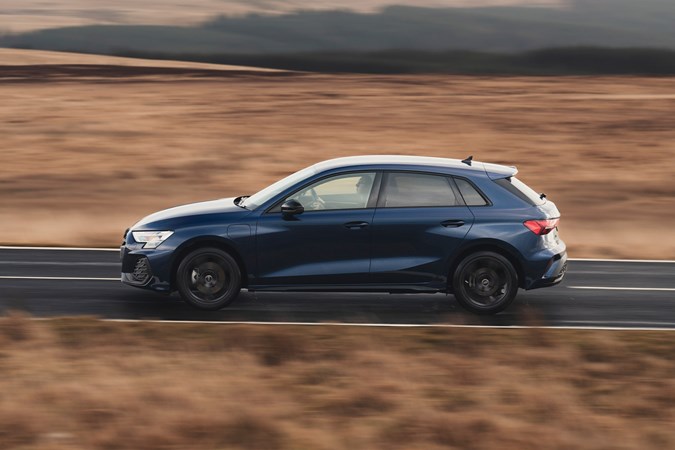
But over the course of 500 miles, including two journeys more than 100 miles, we still averaged an impressive 130mpg, and even with the battery charge depleted, the A3’s engine alone can still achieve around 45mpg. We’ve tested this plug-in hybrid powertrain in various other cars, such as the VW Tiguan e-Hybrid,, and have found it to be very efficient as long as you charge it up regularly.
Speaking of charging, the A3 can accept DC rapid charging and be topped up in half an hour. But generally, it’s more cost-effective to charge PHEVs at a slower rate, and with an AC capacity of 11kW (many PHEVs are capped at 7kW or less), it means you can replenish the A3’s battery fully in 2.5 hours.
It’s also a very attractive company car, with a long electric range and CO2 emissions as low as 7g/km placing it in one of the lowest BIK brackets available for PHEVs.
What models and trims are available?
As with the previous version, this plug-in hybrid engine is only available in the A3 Sportback (hatch) and not in the A3 saloon variant available for petrol and diesel versions. The trim structure also mirrors the standard car, with a choice of Sport, S line and Black Edition grades.
Standard equipment on the Sport includes 17-inch alloy wheels, LED headlights, heated front seats and three-zone climate control. You also get a 10.1-inch infotainment touchscreen, 12.3-inch digital instrument cluster and adaptive cruise control included.
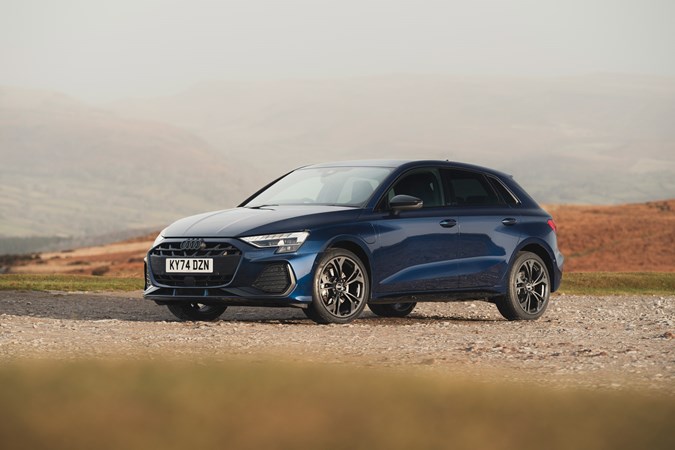
The popular S line trim brings 18-inch alloy wheels, upgraded LED lights, a sportier styling kit, a flat-bottomed steering wheel and artificial leather upholstery, while the Black Edition gets black-painted alloys and a full black exterior styling package.
As for pricing, it’s only the entry-level Sport trim that escapes the £40,000 premium car tax threshold, just sneaking in with a £39,290 starting price, whereas the S line and Black Edition cost from £41,570 and £43,020 respectively.

Audi is also currently offering either a free Ohme home charger or £500 off the list price to help improve the charging experience.
But it’s worth comparing the A3 with its two stablemates, especially the Volkswagen Golf e-Hybrid, which is more than £3,000 cheaper. The Cupra Leon e-Hybrid is closely priced to the Audi, however.
If you’re looking for a plug-in premium family hatch, this could be the car for you. As always, we test our cars thoroughly and over time – and we’ll update this review as we spend more time behind the wheel. Read on for our full ratings, and find out more about how we test cars here.






